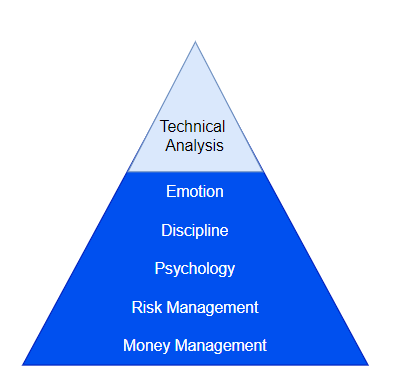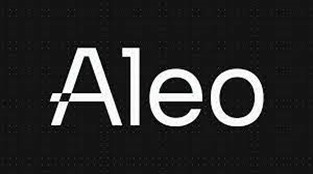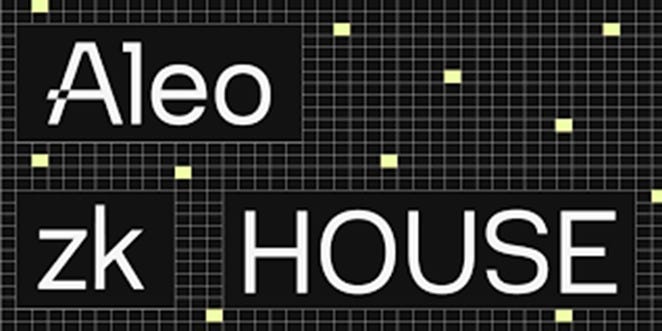APUBCC Bulletin #1
Confuse about blockchain and crypto terminology? Want to know some secret on becoming a better trader? Have heard about Aleo but don't know what is it about? Fear not we got you covered!
Beginner
Blockchain and Cryptocurrency: 10 Must-Know Terms
Blockchain and cryptocurrency are two of the most talked-about technologies today. But what do they mean? And what are some of the key terms you need to know?
1. Blockchain
Technology that stores all cryptocurrency transactions with high security and transparency. It is decentralized, which means it cannot be controlled by any single entity. Some examples of blockchains include Ethereum, Solana, and Bitcoin.
2. Cryptocurrency
Digital assets built on top of blockchain technology. They act as a store of value and can be used to purchase goods and services. Some examples of cryptocurrency coins include Ethereum (ETH), Solana (SOL), and Bitcoin (BTC).
3. Smart contracts
Self-executing contracts stored on a blockchain to automate transactions and agreements. For example, a smart contract could be used to release funds when a product has been shipped.
4. Mining
The process of creating new cryptocurrencies and verifying transactions on a blockchain. There are two main types of mining: proof of work (PoW) and proof of stake (PoS). PoW uses a lot of energy and is very secure, while PoS is more energy-efficient and less secure.
5. Gas
Measurement unit of computational effort needed to execute a transaction on a blockchain. It is also used to refer to how much fees must be paid to miners for processing a transaction. Some blockchains do not use gas fees, such as the Bitcoin blockchain.
6. Wallets
Software programs that store private and public keys and allow the user to send and receive cryptocurrency. Private keys are the codes that give access to a user's cryptocurrency, while public keys are the addresses used for other users to send cryptocurrency to that user. Some examples of wallets include Metamask and Coinbase.
7. Web3
Concept to visualize the next generation of internet, which is built on blockchain technology. It is commonly described as a more decentralized, secure, and transparent internet. Examples of Web3 applications include DeFi, NFTs, and the metaverse.
8. DeFi (Decentralized Finance)
A financial system based on blockchain technology, which provides financial services such as lending, borrowing, and trading of assets. For instance, Ethereum, despite not being a DeFi application, is the most popular platform for developing and deploying DeFi apps like Uniswap, a decentralized exchange for cryptocurrency trading.
9. NFT (Non-Fungible Token)
A digital asset based on blockchain technology, which cannot be replaced and is unique. NFT can represent ownership of varying digital assets such as art, music, and videos. NFTs are usually purchased on decentralized exchanges such as OpenSea.
10. NGMI & WGMI
NGMI & WGMI are two common acronyms in the cryptocurrency community. NGMI stands for "Not Gonna Make It," while WGMI stands for "We're Gonna Make It." These acronyms are often used to express bullish or bearish sentiment on the future of cryptocurrency. I hope this helps to clear up some of the key concepts in blockchain and cryptocurrency. Be sure to do your own research before investing in any cryptocurrency
Market Trends
The Trader’s Pyramid
So what is this trader’s pyramid? In the world of trading, success doesn't only come from intricate technical analysis. Interestingly, success depends on a pretty unusual mix which is 20% technical analysis and a whopping 80% combination of emotions, discipline, psychology, risk management, and money management. Understanding the trader's pyramid helps traders to understand and work with market trends in an organized way. It gives a clear method to study and make decisions about which direction the market is moving. This structured approach helps traders make better choices.
Lets take a look into the first 20% first,
If you're in the journey of trading cryptocurrencies, one essential part of this journey is learning about technical analysis. This means studying things like patterns that appear on price charts, using tools called indicators to help predict price movements, and keeping an eye on how the overall market is behaving. But remember, it's not the only thing that decides if you'll succeed or not.
The 80%: Key Foundations for Success,
The most important part, which makes up a big 80% of your trading success, is how you handle your feelings, stay focused, understand how people act in the market, and use smart ways to keep your money safe. It's like the strong foundation of a building. Understanding your feelings helps you deal with both good and tough times in trading. Being disciplined means sticking to your plans, even when it's tempting to do something else. And even when things get crazy, being mentally strong helps you stay calm. Plus, using clever ways to protect your money and make it grow is like having a safety net for your success, so you're prepared for whatever comes your way.
This mix of knowing how things work and understanding your feelings is what drives you towards becoming a skilled trader. Following this pyramid helps you shape success, not just make trades. Keep this balanced approach in mind as you navigate through your crytocurrency trading journey!
Project Analysis
Aleo
In the year 2022, Aleo has raised $200M in a Series B led by Kora Management LP and Softbank Vision Fund 2. So, the question is what is Aleo all about to achieve this funding support?
As a member of the Web-3 space, everyone knows that the biggest challenges in blockchain are privacy and scalability abilities when it comes to blockchain trilemma. However, Aleo as a zero-knowledge design blockchain platform makes this happen and get out of the boundaries of mutual exclusion of decentralization, scalability, and privacy.
Through Aleo, ZK full-stack private blockchain applications can be built easily on layer 1. Aleo utilizes decentralized systems and ZK cryptography in securing user data. Moreover, Aleo makes it easy for developers to work on user-centric technology development. As Aleo support Web 3 developers with various tech stack as listed:
- Leo (Programming Language)
Leo abstracts low-level cryptography providing easier programming in ZK logic.
- snarkVM + snarkOS (Compute service)
snarkVM is a virtual machine that enables off-chain computation where only needed verifiable proofs on-chain.
snarkOS is an operating system that validates transaction with single proof of execution and maintains an immutable state of Aleo chain.
- Explorer
As a typical explorer, developer can search and analyze transactions on Aleo chain.
- Aleo SDK
Aleo SDK provides ability to build high-performance apps where users can privately interacts with.
Want to learn more about Aleo, find out more about the Aleo zk House in your region!





